In Venezuela we have many cultural traditions that are celebrated throughout the year, one of them is La Llora, which is typical of the Aragua state, and is celebrated in the city of La Victoria and in the town of Zuata every November 2, coinciding with the day of the faithful departed or Day of the dead.
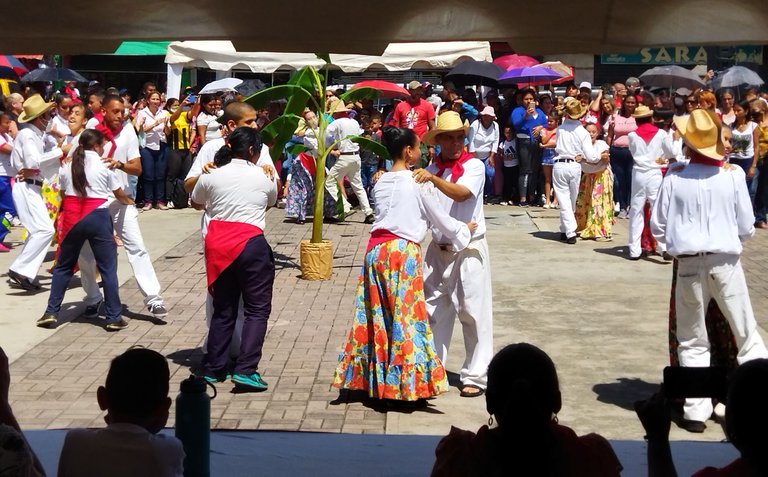
Desde hace unos cinco años me gusta ir a ver este baile porque es muy divertido y la música muy pegajosa jajaja, así que hoy quiero compartir con ustedes un poquito de su historia y algunas de las muchas fotos que hice ya que a diferencia de las otras veces, que he ido a ver el baile de La Llora como simple espectadora, esta vez fui con la intención exclusiva de hacer fotos.
For about five years I have liked to go see this dance because it's very funny and the music is very catchy hahaha so today I want to share with you a little bit of its history and some of the many photos I took so unlike the other times, that I have gone to see the dance of La Llora as a simple spectator, this time I went with the sole intention of taking photos.
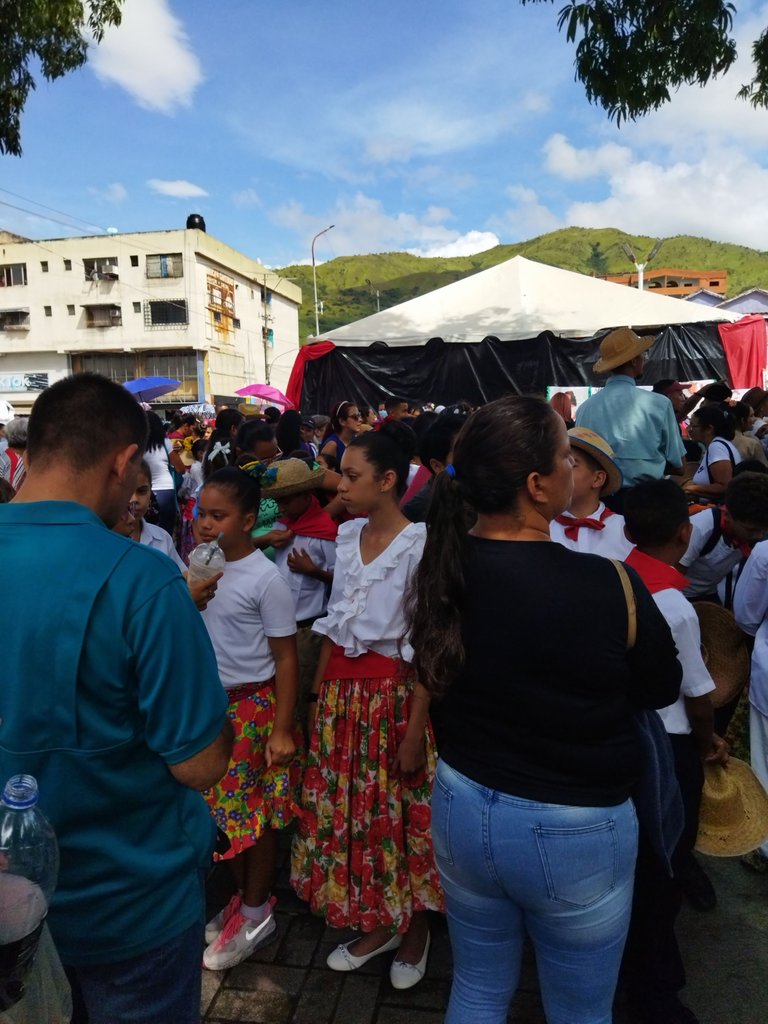
La Llora es un baile que consta de seis partes y que según cuentan surgió como una especie de burla de indígenas y negros hacia las fiestas y reuniones de los colonos españoles. Con este baile buscaban imitar lo que veían que pasaba en dichas reuniones y festejos, algunos mientras los miraban a través de las ventanas y otros a través del contacto directo como esclavos y trabajadores en casas de las familias españolas.
La Llora it's a dance that consists of six parts and that, according to what they say, emerged as a kind of mockery of indigenous and black people towards the parties and meetings of the Spanish settlers. With this dance they sought to imitate what they saw happening in these meetings and celebrations, some while looking at them through the windows and others through direct contact as slaves and workers in the homes of Spanish families.
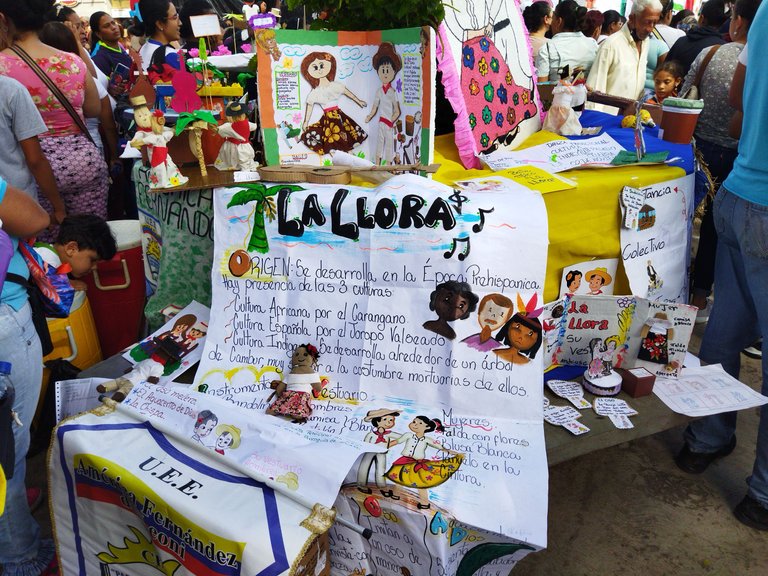
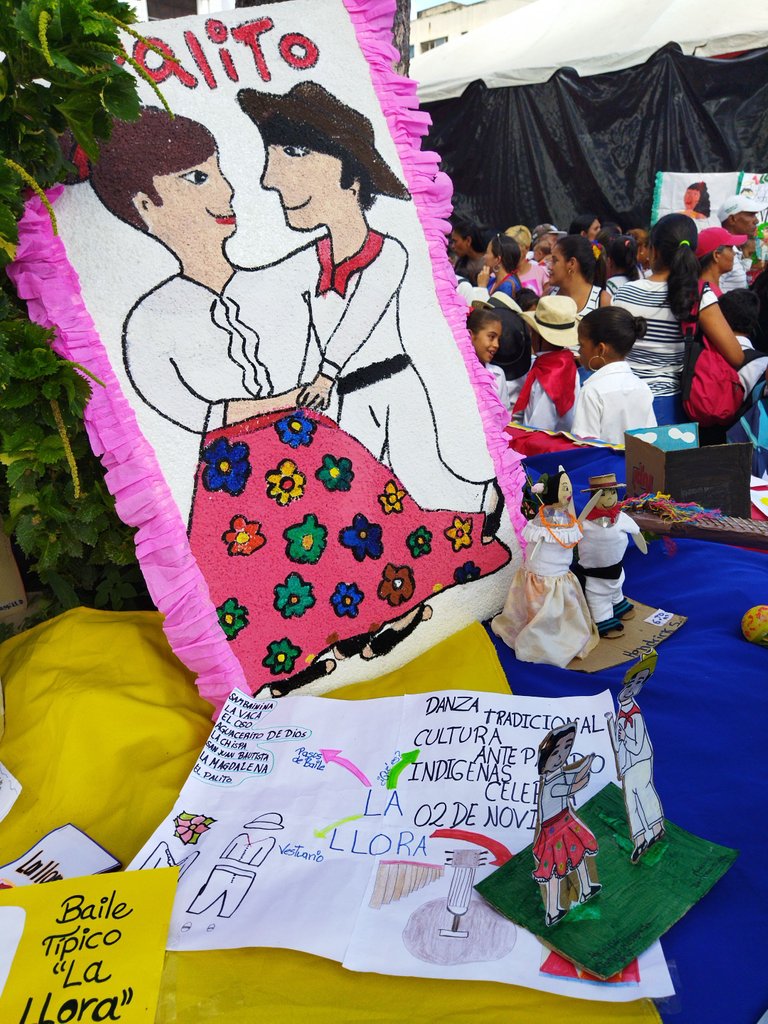
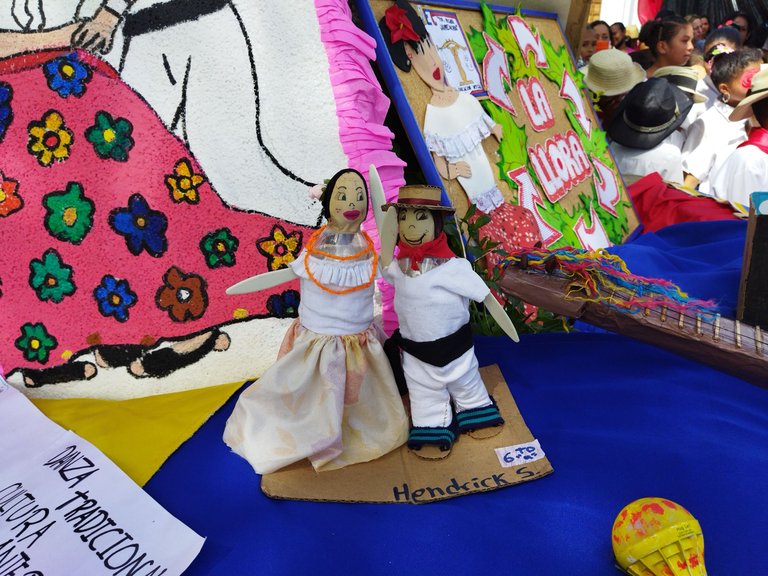
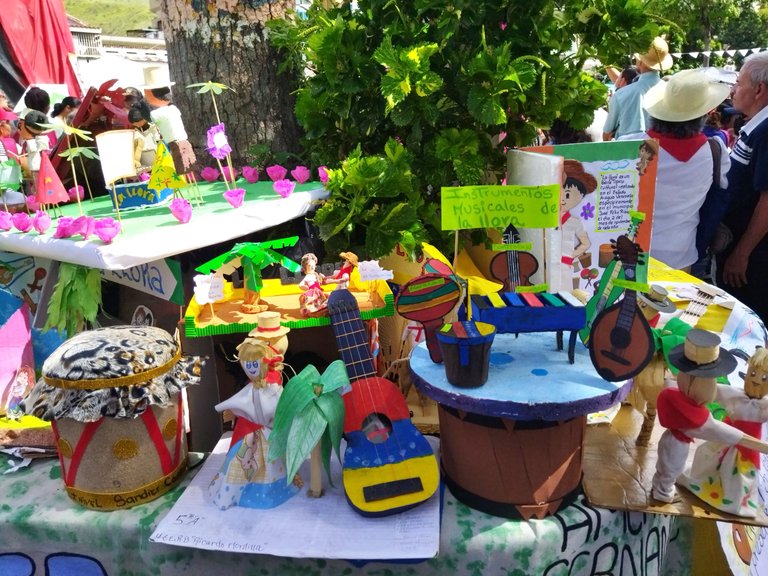
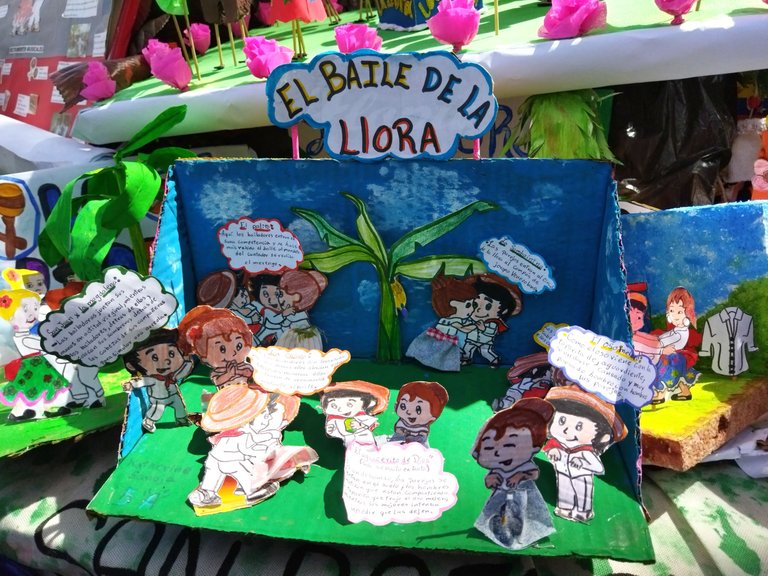
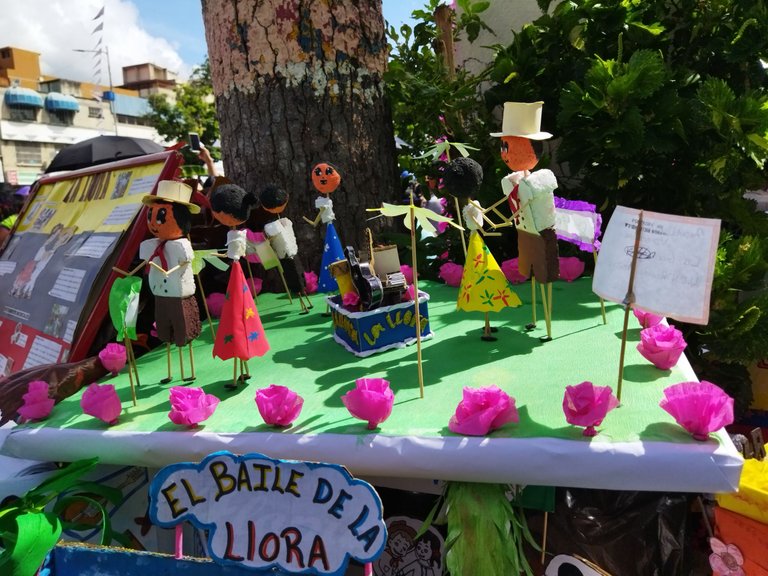
La música de La Llora es una mezcla de ritmos venezolanos como el merengue, el joropo y el vals interpretada a través de instrumentos como el cuatro, la mandolina, la guitarra, las maracas y diferentes tipos de percusión. Desde hace algunos años, la orquesta sinfónica infantil y juvenil del Sistema Nacional de Orquestas y Coros del núcleo de La Victoria se ha integrado a esta manifestación cultural.
The music of La Llora is a mixture of Venezuelan rhythms such as merengue, joropo and waltz performed through instruments such as cuatro, mandolin, guitar, maracas and different types of percussion. For some years now, the children's and youth symphony orchestra of the National System of Orchestras and Choirs of the nucleus of La Victoria has been integrated into this cultural event.

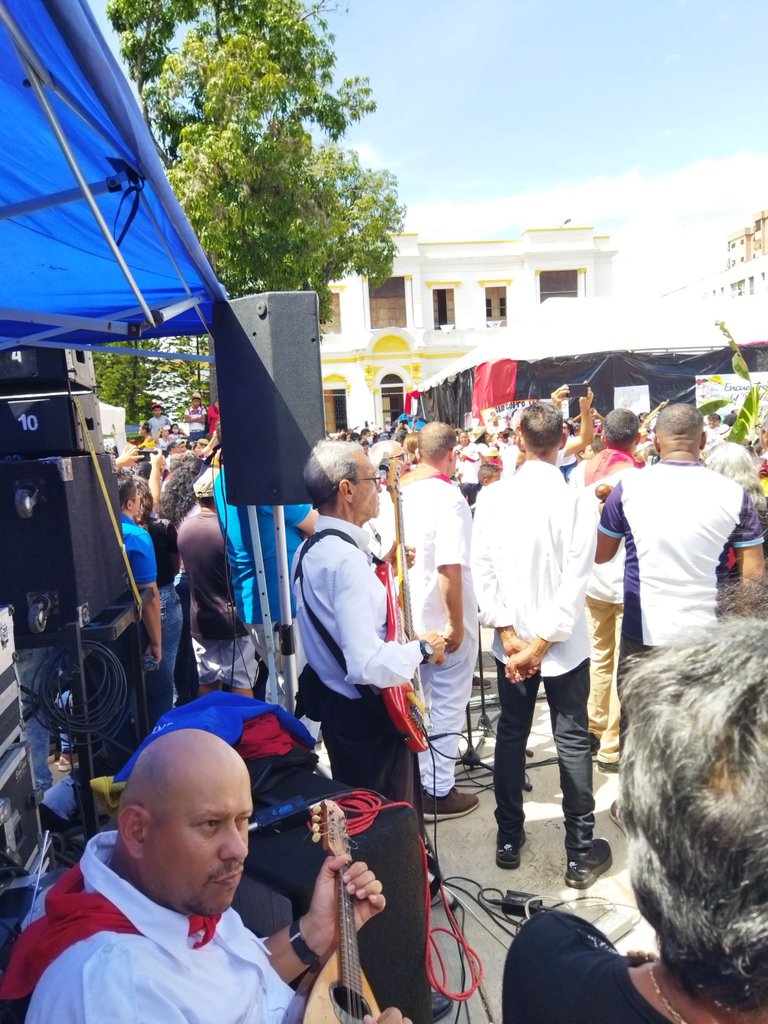
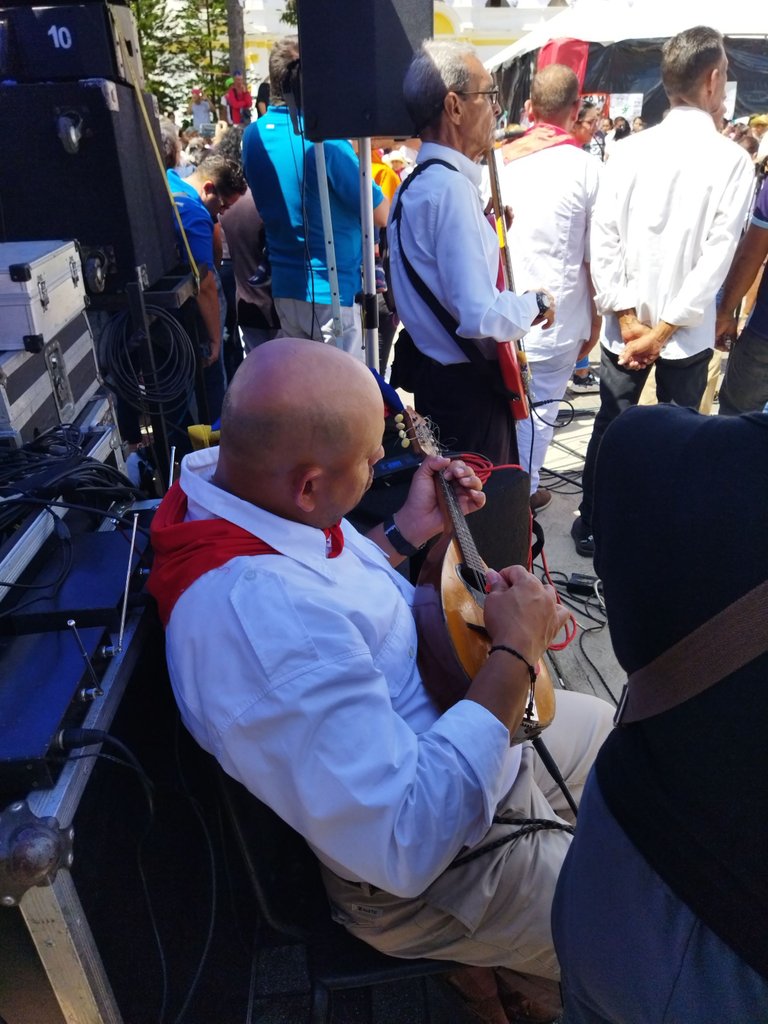
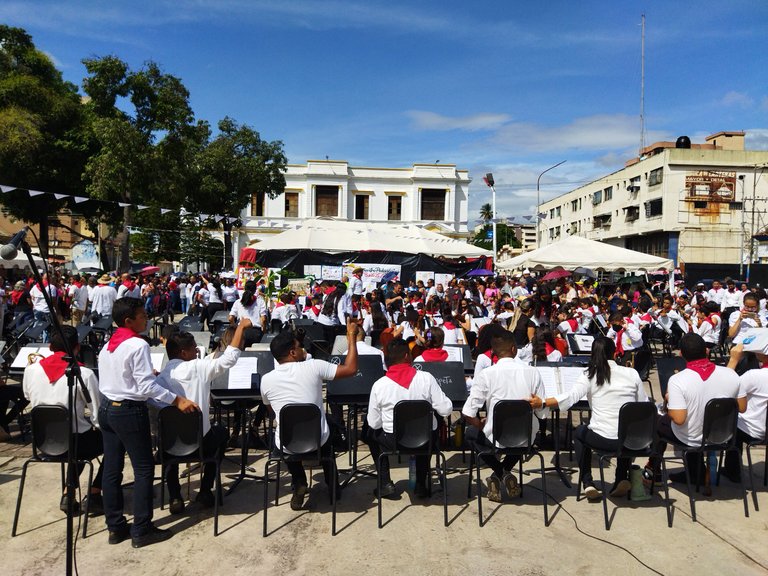

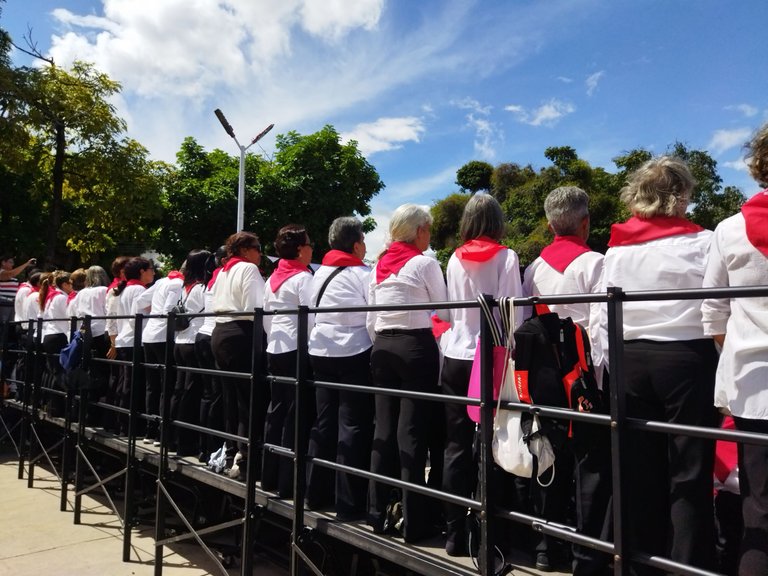

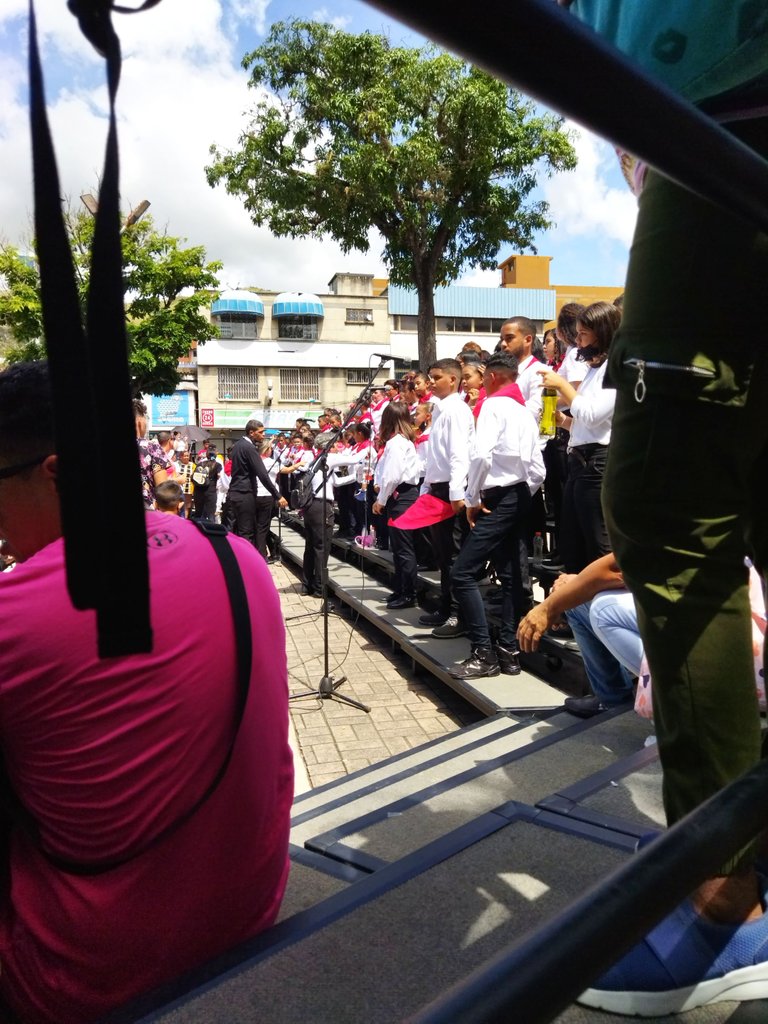


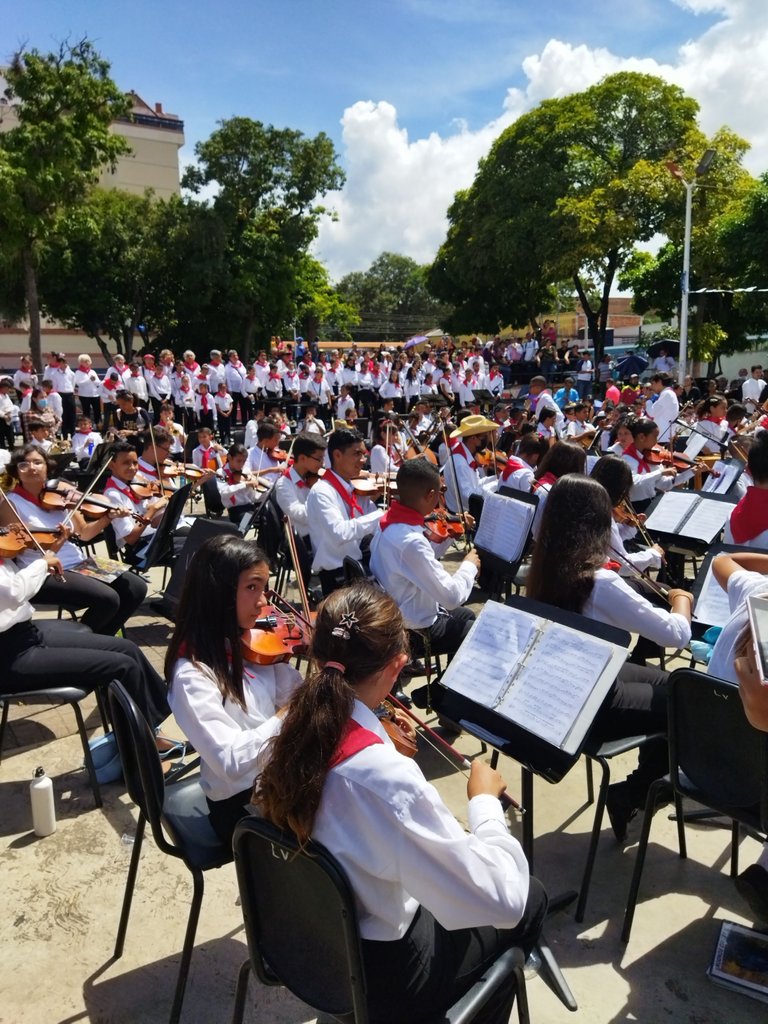
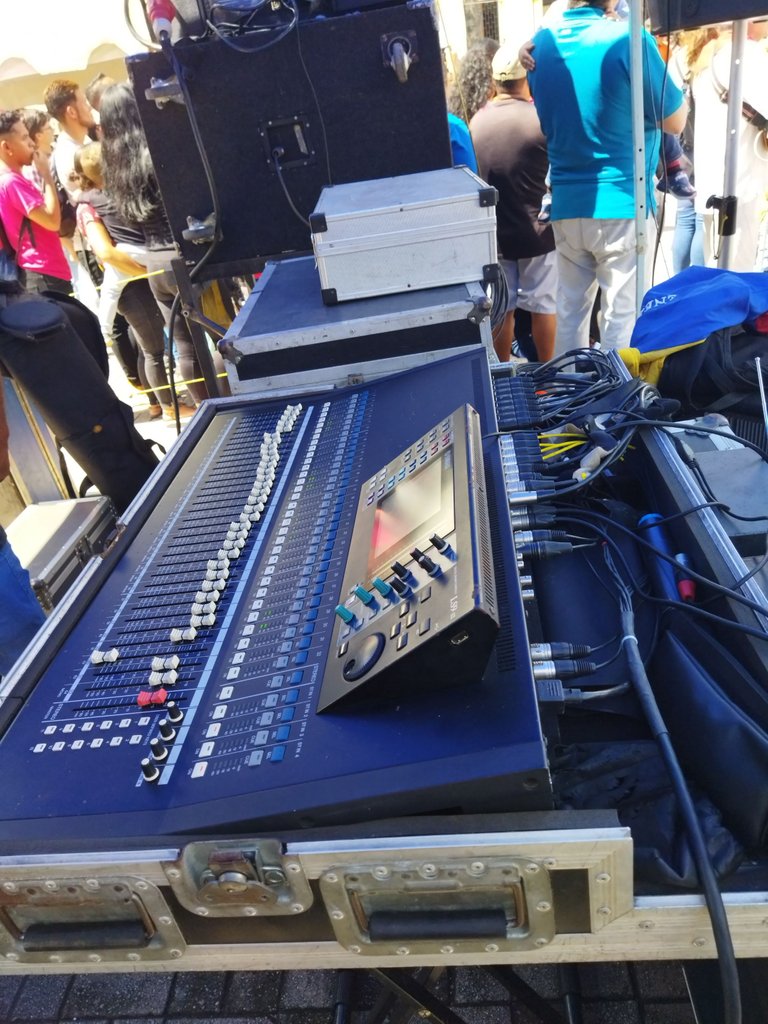
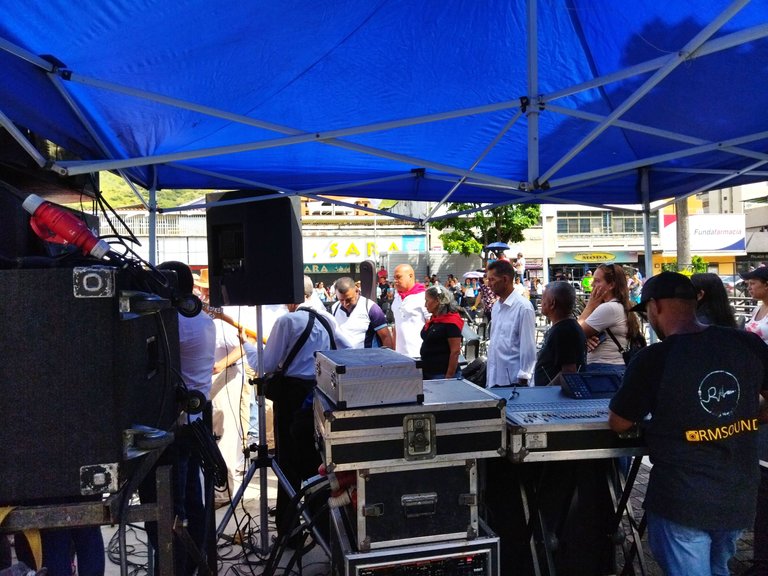
El escenario siempre es alguna de las dos plazas principales de la ciudad, este año lo hicieron en la plaza Campo Elías y la puesta en escena es sencilla ya que solo se pone una mata de cambur en el centro de lo que se supone que es un patio y los bailes se van desarrollando alrededor de esa mata.
The stage is always one of the two main squares of the city, this year they did it in the Campo Elías square and the staging is simple since only a banana plant is placed in the center of what is supposed to be a patio and the dances take place around that bush.
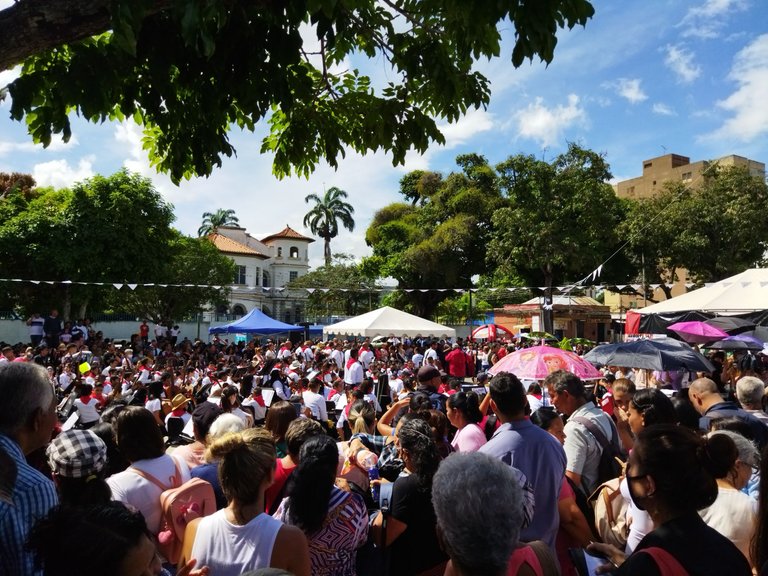

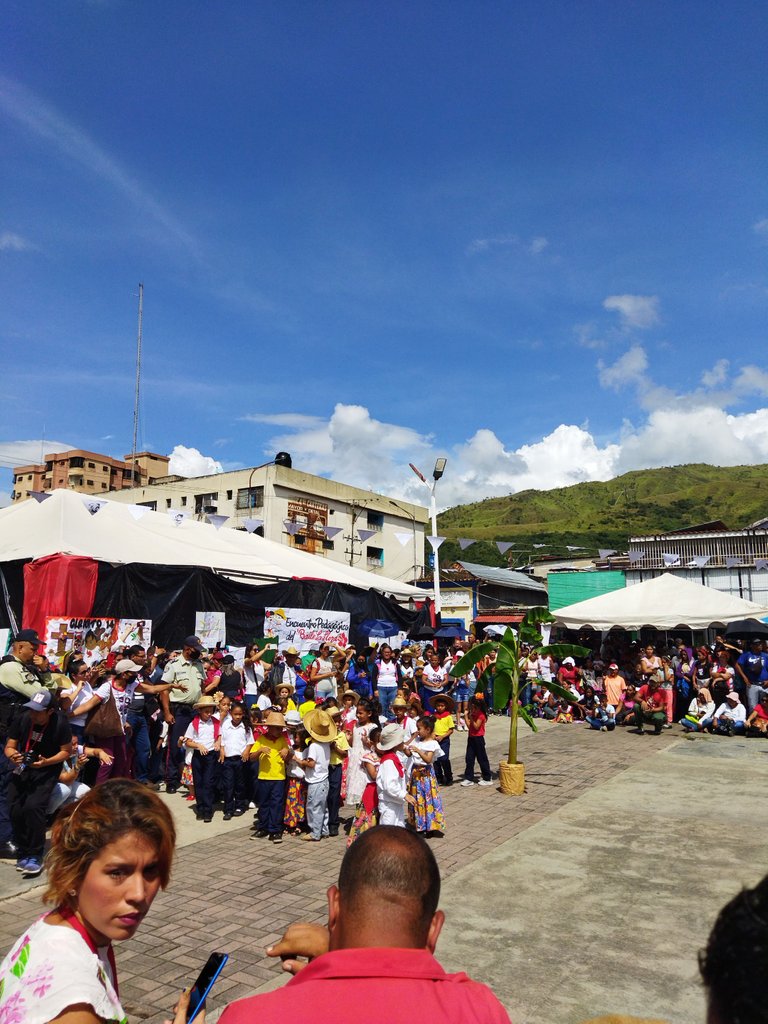
En esta edición iban a bailar los niños y jóvenes de algunas de las escuelas de nuestro municipio.
In this edition, children and young people from some of the schools in our municipality were going to dance.
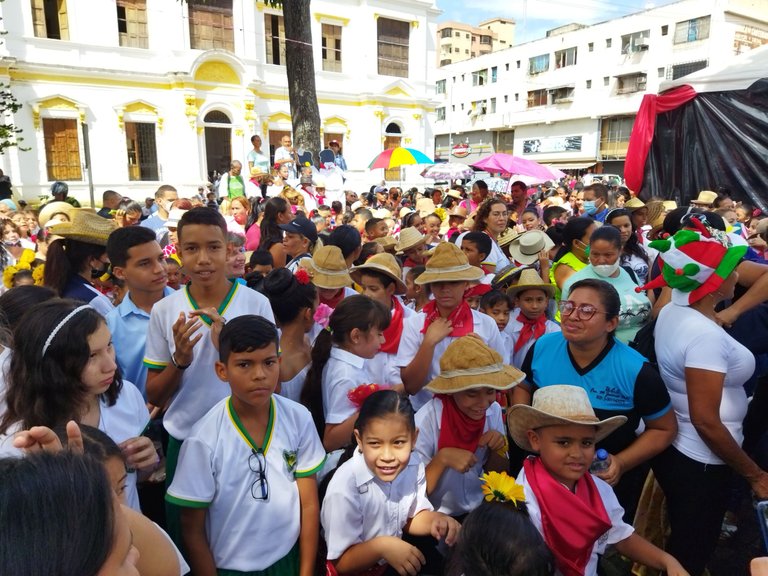

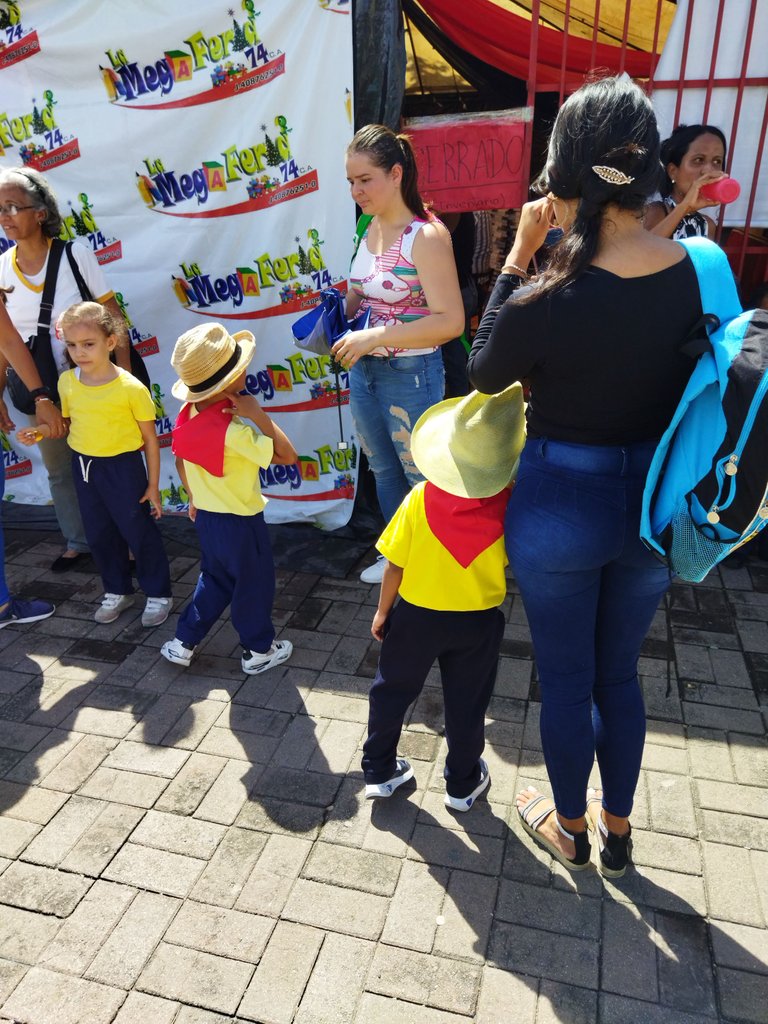
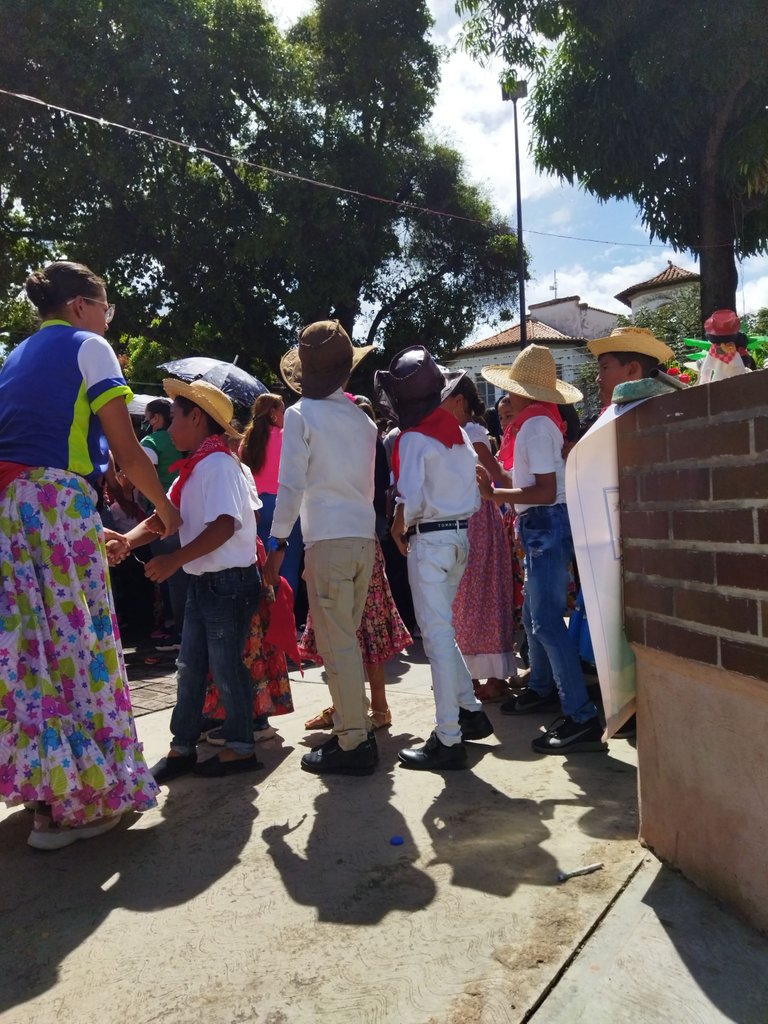
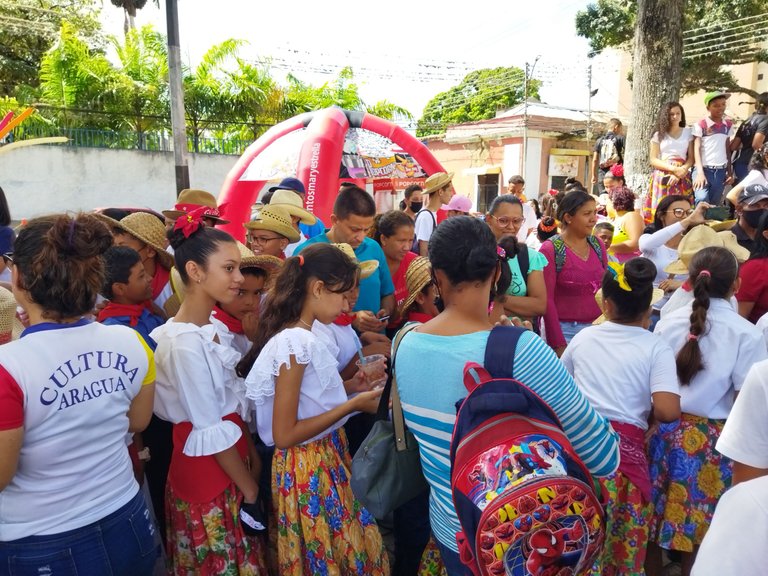
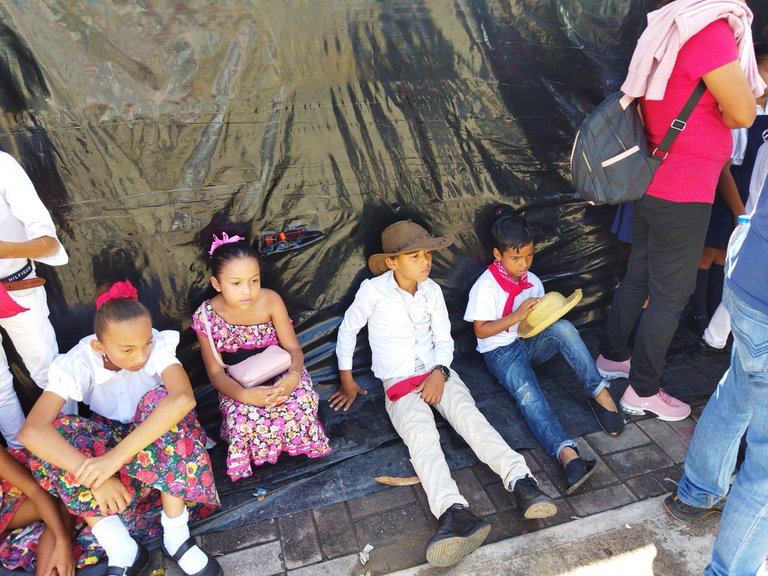
La Llora se baila con una vestimenta característica, los hombres visten de blanco con sombrero de paja, un pañuelo rojo en el cuello y alpargatas (un calzado tradicional), las mujeres llevan falda larga con estampado de flores, blusa blanca, pañuelo rojo amarrado en la cintura, alpargatas y tocado floral en el cabello. Igual hay mucha gente que se mete al baile con cualquier ropa.
La Llora is danced with a special outfit, the men wear white with a straw hat, a red neckerchief and espadrilles (traditional footwear), the women wear a long skirt with a flower print, a white blouse, a red scarf tied at the waist, espadrilles and floral headdress in the hair. Anyway there are many people who get into the dance without these clothes.
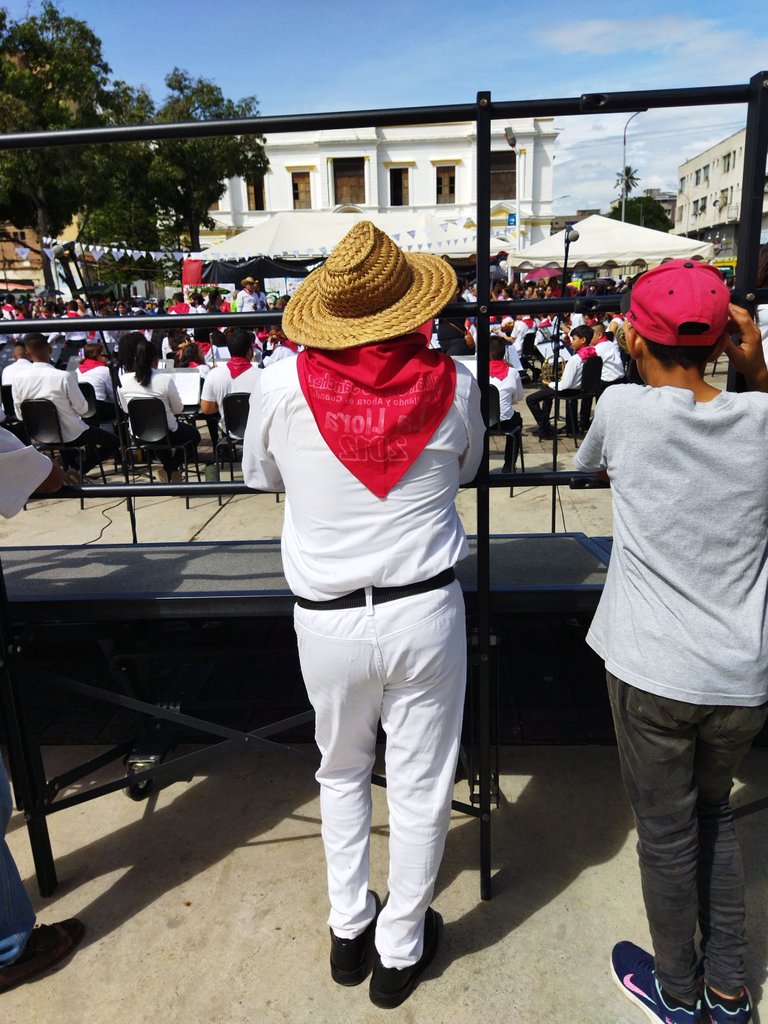

Como ya les expliqué, este baile tradicional es un burla a las costumbres españolas de la época de la colonia y en particular a lo que sucedía en esas fiestas. Las seis partes de La Llora son: La Sambainina, La Vaca, El Oso, La Chispa, San Juan y La Magdalena y El Palito. Cada Llora (formada por los seis bailes), dura unos 10 minutos y ese día, todos los grupos que van a participar lo van haciendo de menor a mayor, empezando por los niños más pequeños, los adolescentes y por último los adultos. Dependiendo de la cantidad de grupos será la cantidad de Lloras que se toquen por lo que mientras más grupos vayan a bailar, más horas durará la fiesta.
As I have already explained, this traditional dance is a mockery of the Spanish customs of the colonial era and in particular what happened in those parties. The six parts of La Llora are: La Sambainina, La Vaca (the cow), El Oso (the bear), La Chispa (the spark), San Juan and La Magdalena (Saint John and the Magdalene) and El Palito (the stick). Each Llora (formed by the six dances), lasts about 10 minutes and that day, all the groups that are going to participate do so from the smallest to the largest, starting with the youngest children, then the teenagers and last the adults. Depending on the number of groups, it will be the number of Lloras that will be performed so the more groups go to dance, the more hours the party will last.
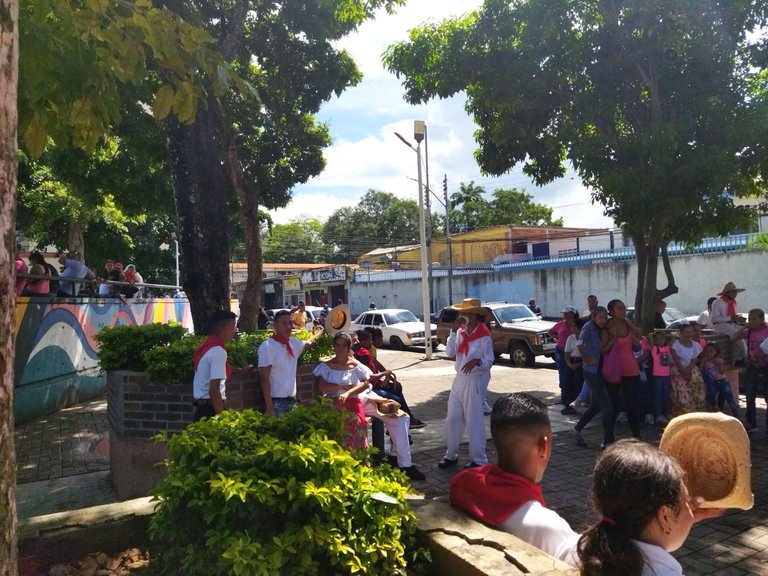
La Sambainina es un tranquilo vals que da inicio al baile.
The Sambainina is a quiet waltz that begins the dance.
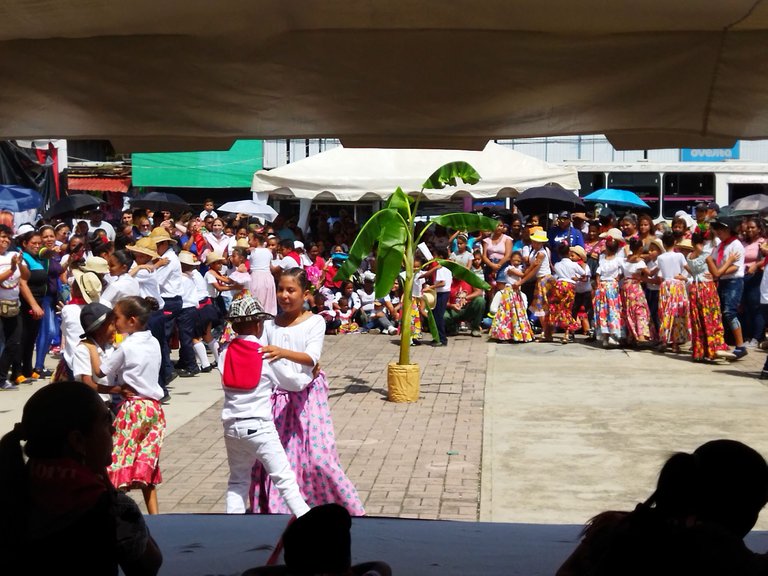
La parte de La Vaca posiblemente es una burla y hace alusión a la afición española por los toros y durante la misma, la mujer imita los cuernos del toro con los dedos mientras el hombre la "torea" con su pañuelo rojo.
The part of La Vaca (the cow) possibly is a mockery and refers of the Spanish love of bullfighting and during it, the woman imitates the bull's horns with her fingers while the man "fights" her with his red scarf.
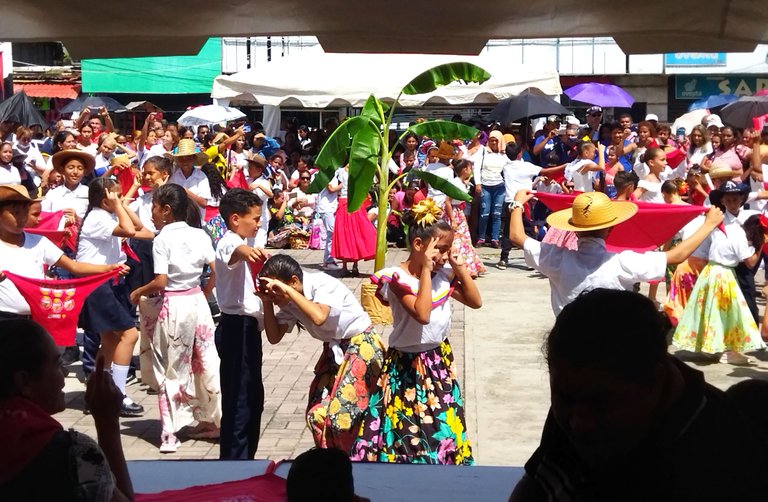
En el baile de El Oso, las parejas imitan el caminar lento de este animal mientras la letra de la canción va diciendo que el oso trajo aguardiente, una bebida alcohólica extraída de la caña de azúcar. Esto obviamente haciendo alusión al gusto de los españoles por el licor.
In the dance of El Oso (the bear), the couples imitate the slow walk of this animal while the lyrics of the song say that the bear brought schnapps, an alcoholic beverage extracted from sugar cane. This obviously alluding to the taste of the Spanish for liquor.
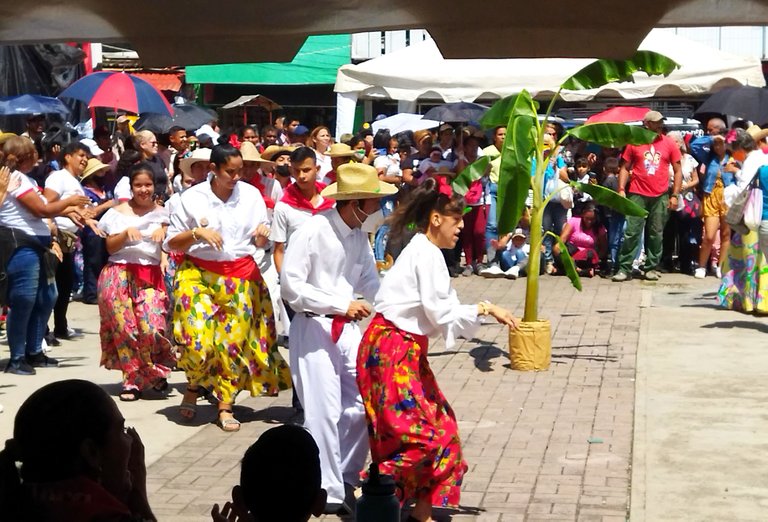
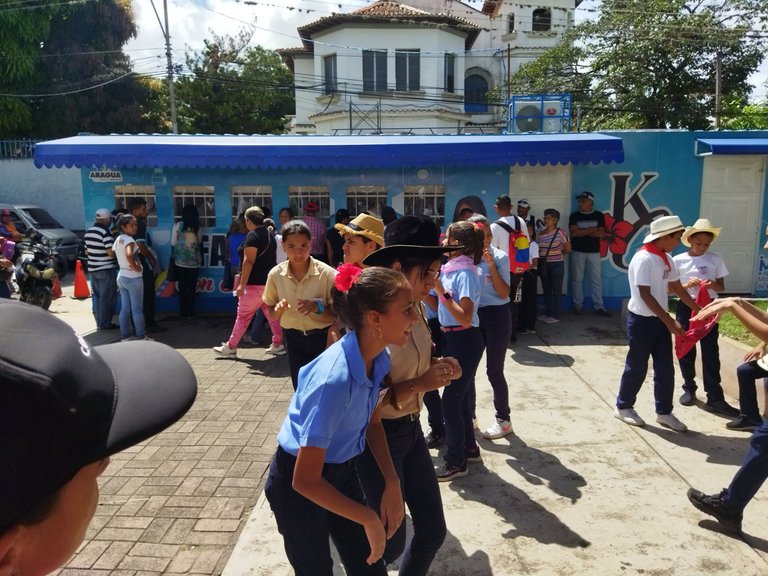
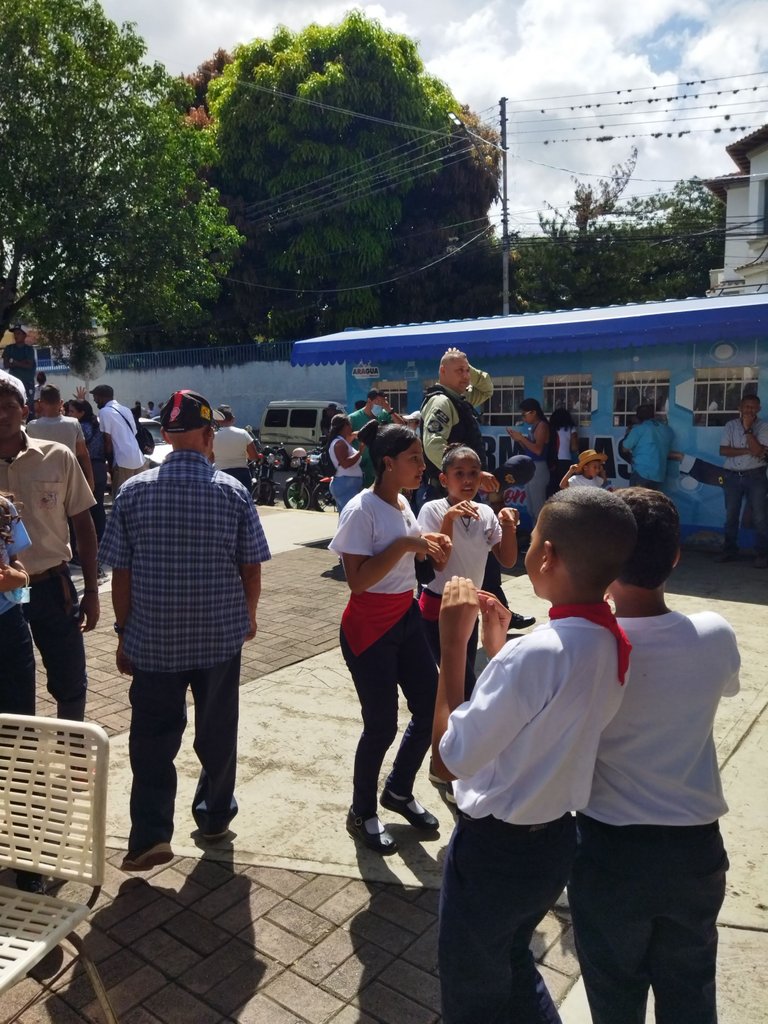
La Chispa es una de las partes más graciosas porque se ven las consecuencias del aguardiente que trajo el oso jajaja. Durante este baile, si es que se le puede llamar así, el hombre va tambaleándose por la borrachera mientras la mujer intenta sostenerlo. Así terminaban las fiestas de los españoles por lo que indios y negros se burlaban de eso.
La Chispa (the spark) is one of the funniest parts because you can see the consequences of the schnapps that the bear brought hahaha. During this dance, if you can call it that, the man staggers drunkenly while the woman tries to hold him up. This is how the festivities of the Spanish ended according to the indigenous and the black people.
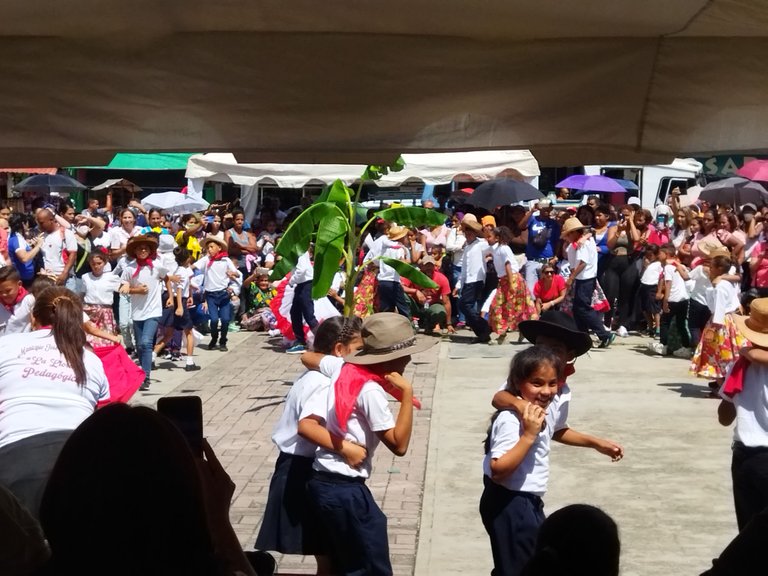
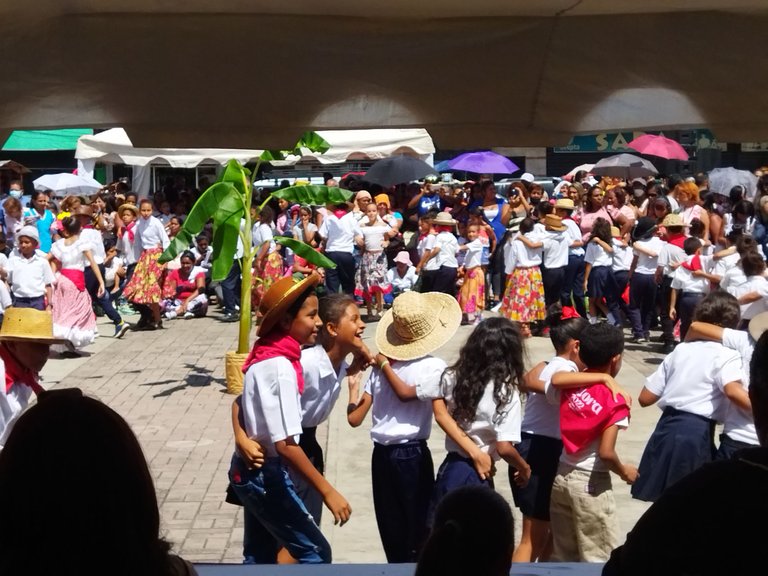
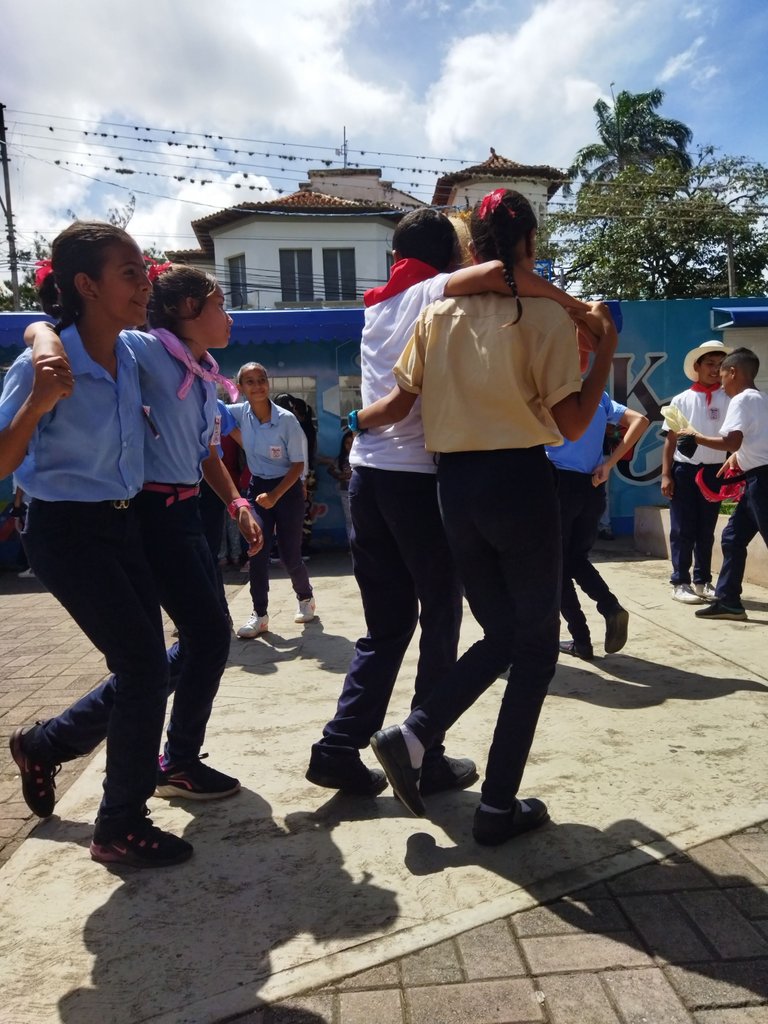
San Juan y la Magdalena es una crítica hacia la religión católica impuesta por los colonos y a su vez una crítica a la doble moral puesto que luego de la borrachera buscaban tapar todo con la religión.
San Juan y la Magdalena (Saint John and the Magdalene) is a criticism of the Catholic religion imposed by the settlers and it's also a criticism of double standards since after the drunkenness they sought to cover everything with religion.
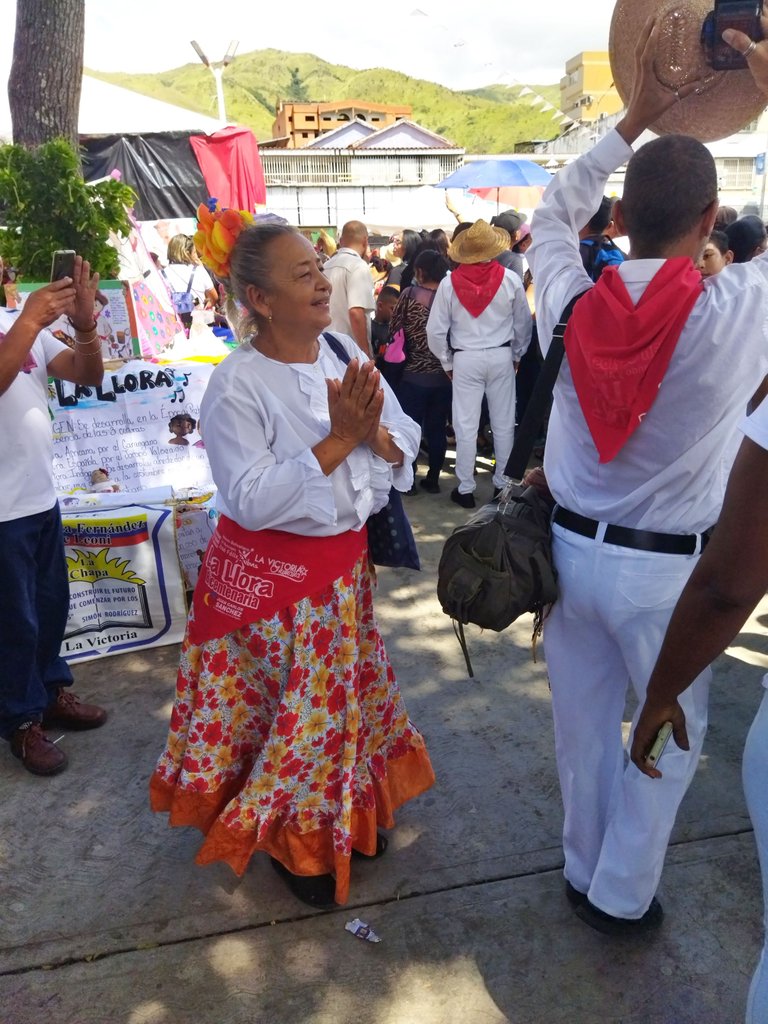
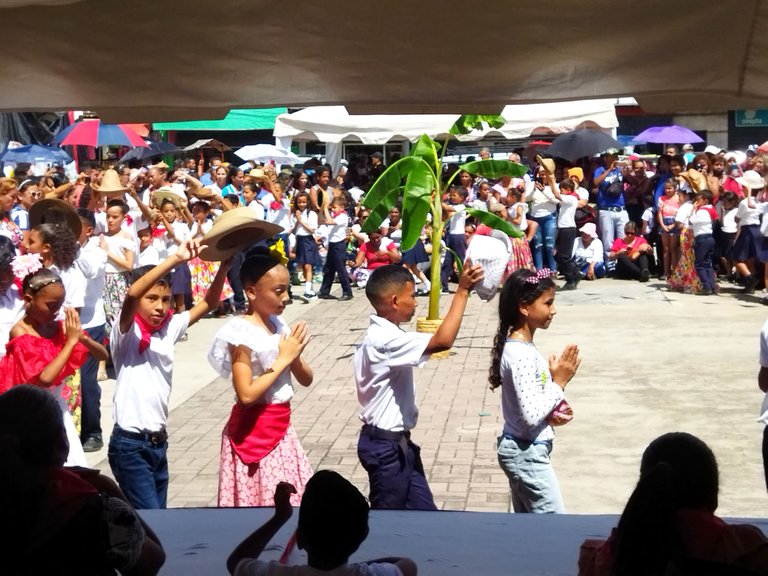
Por último, llega la parte de El Palito, es quizás la más divertida ya que las parejas van bailando dando vueltas, cuando se acercan, los hombres se intentan tumbar entre sí con una zancadilla mientras las mujeres los sostienen de la cintura para que no se caigan. La letra habla de los hombres celosos y probablemente haga alusión a las infidelidades de parte y parte.
Finally, comes the part of El Palito (the stick), it's perhaps the funniest since the couples dance in circles, when they approach, the men try to knock each other down with a tripping while the women hold them by the waist so that they don't fall. The lyrics talk about jealous men and probably allude to infidelity on both sides.
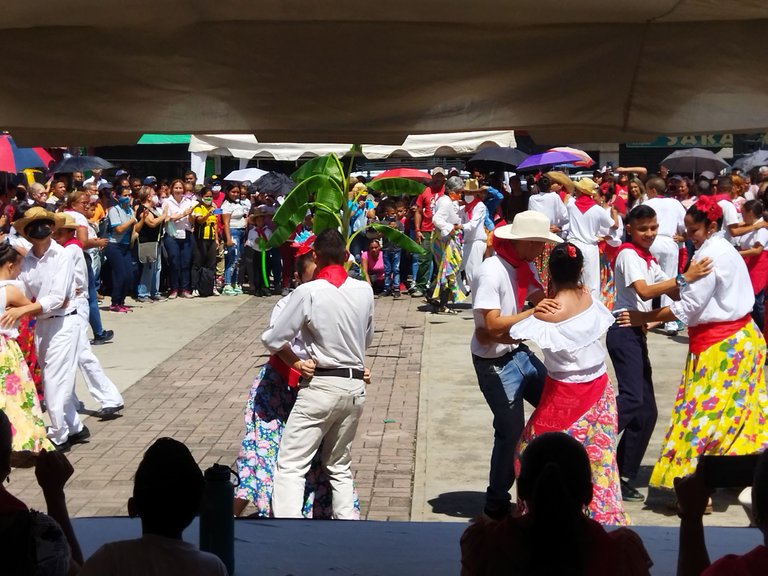
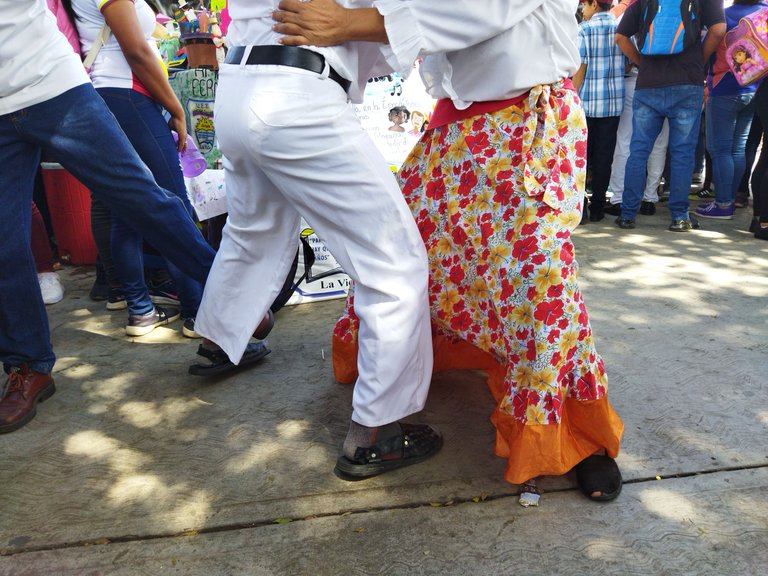
Como cada año, ir a disfrutar de esta tradición local es una experiencia muy divertida, hacer de reportera gráfica por primera vez fue muy interesante y me permitió tener una vista más íntima y cercana con todas las personas que iban a participar y también pude hacer muchísimas fotos que pronto compartiré en otra publicación.
Like every year, going to enjoy this local tradition is a very fun experience, being a photojournalist for the first time was very interesting and allowed me to have a more intimate and close view with all the people who were going to participate and I was also able to do many photos that I will share soon in another post.

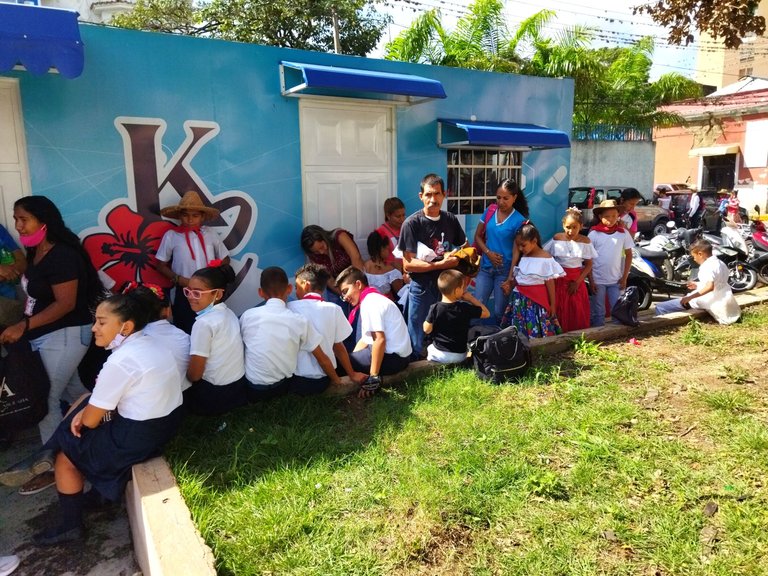
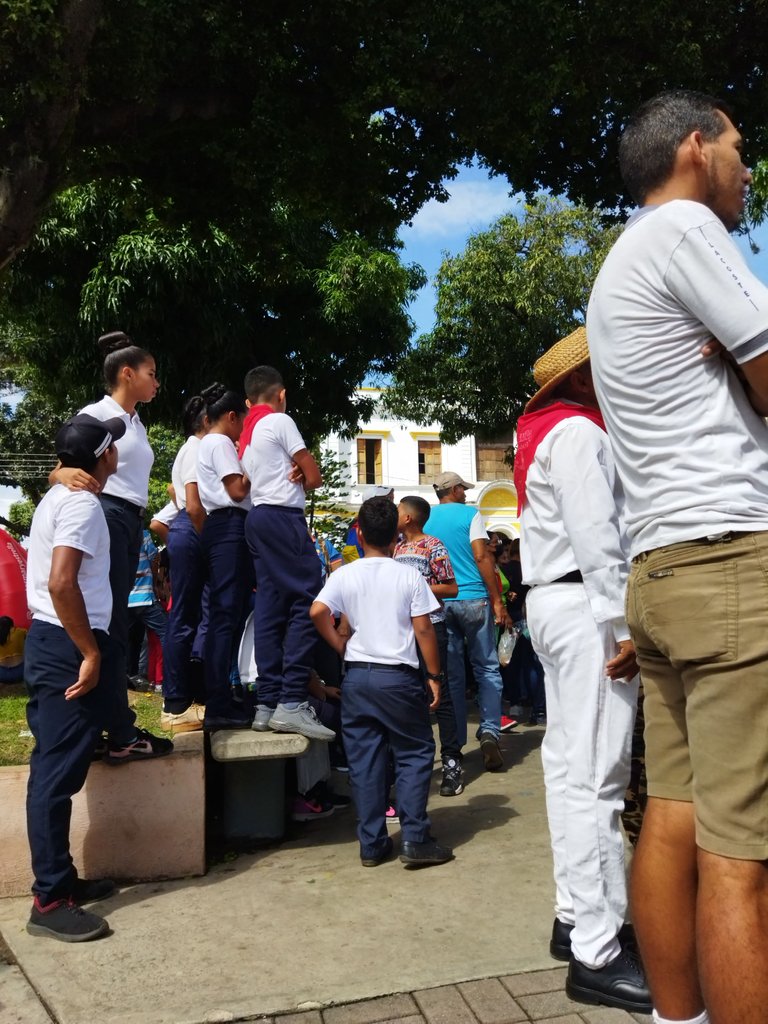
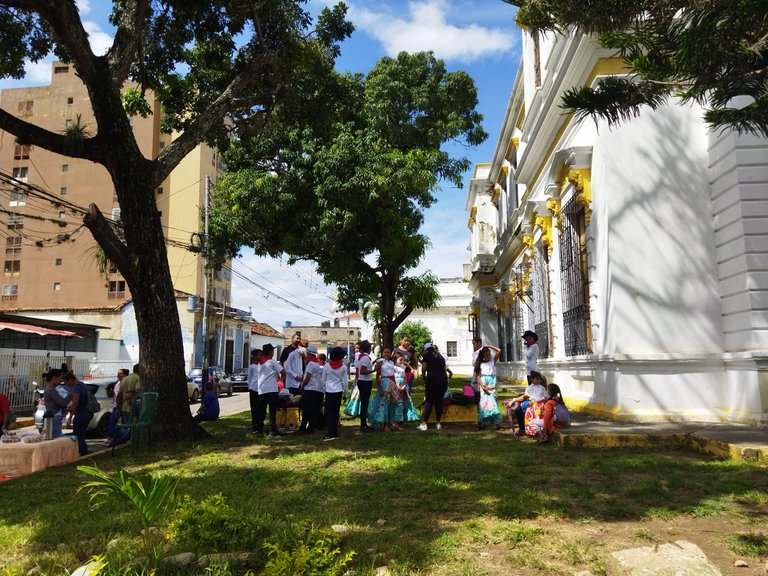
Gracias por leer, compartir, apoyar, votar y comentar.
Hasta la próxima.
¡Miau!
Thanks for read, share, vote and comment.
Until next post.
Meow!
Wow, what an interesting tradition! Never heard of it but it looks really cool :) Btw "la llora" means "a cry" right? I remember this word from the famous Mexican song "Cielito Lindo" :) So you are now a reporter just like you sister? That´s awesome, congrats! :)
The least I can do for you and this great report is to share it with my followers in my next upvote giveaway and drop some TipU greetings here ;)
@tipu curate
Hehehe, yes! It's a really cool and fun tradition and although the main and "offitial" dance happens in the main square of the city, during all November La Llora is danced in schools, high schools and other towns and squares of the Aragua state. Yes, it means "the cry" although nobody knows why has that sad name because it's a very happy dance and
the music, too and even the lyrics of the songs are funny hahaha 🤷🏻♀️
Let me tell you that I had so much fun being a reporter 🤭🤭😎 it's a very interesting job, although sometimes can be hard, dangerous and stressing, my sister has soooo many stories to tell about that amazing job, I just did my best hehehe 🤭😁
Thank you very much for your support @phortun 🤗😸🤘
Upvoted 👌 (Mana: 7/47) Liquid rewards.
🤗💃🏻🕺 thanks 🌻
¡Excelente reporte gráfico!
Muchas gracias fue muy divertido hacer por un día lo que tú hacías casi todos los días 📸🤭☺️🤗😽
Jejeje ¡ser reportera es genial! :D
Sin duda alguna, divertido, interesante y tienes acceso a todo jejeje 🤩
😁
De verdad que no conocía esta tradición, se ve muy divertida y colorida!!
todos se ven que la están pasando muy bien, que se están divirtiendo mucho!
Jajaja, sí, es realmente divertida, todo el mundo lo pasa bien en La Llora, tanto los que bailan y participan como los que solo van de espectadores 😁 y eso que no has escuchado la música, es muy contagiosa, en Youtube debe haber videos de La Llora, búscalos y lo comprobarás jejeje, saludos y gracias por comentar y apoyar mi contenido
😺🤘🤗